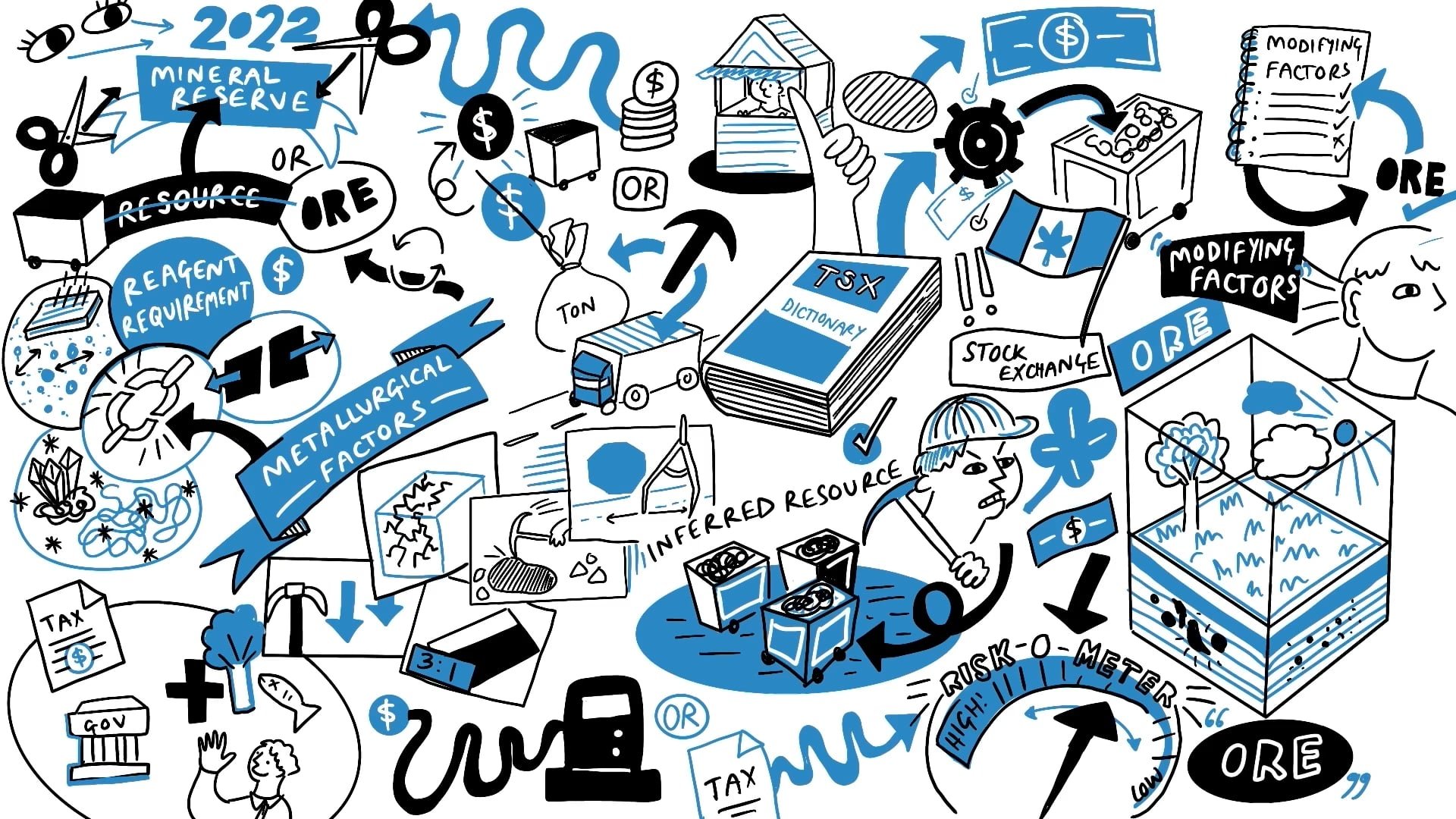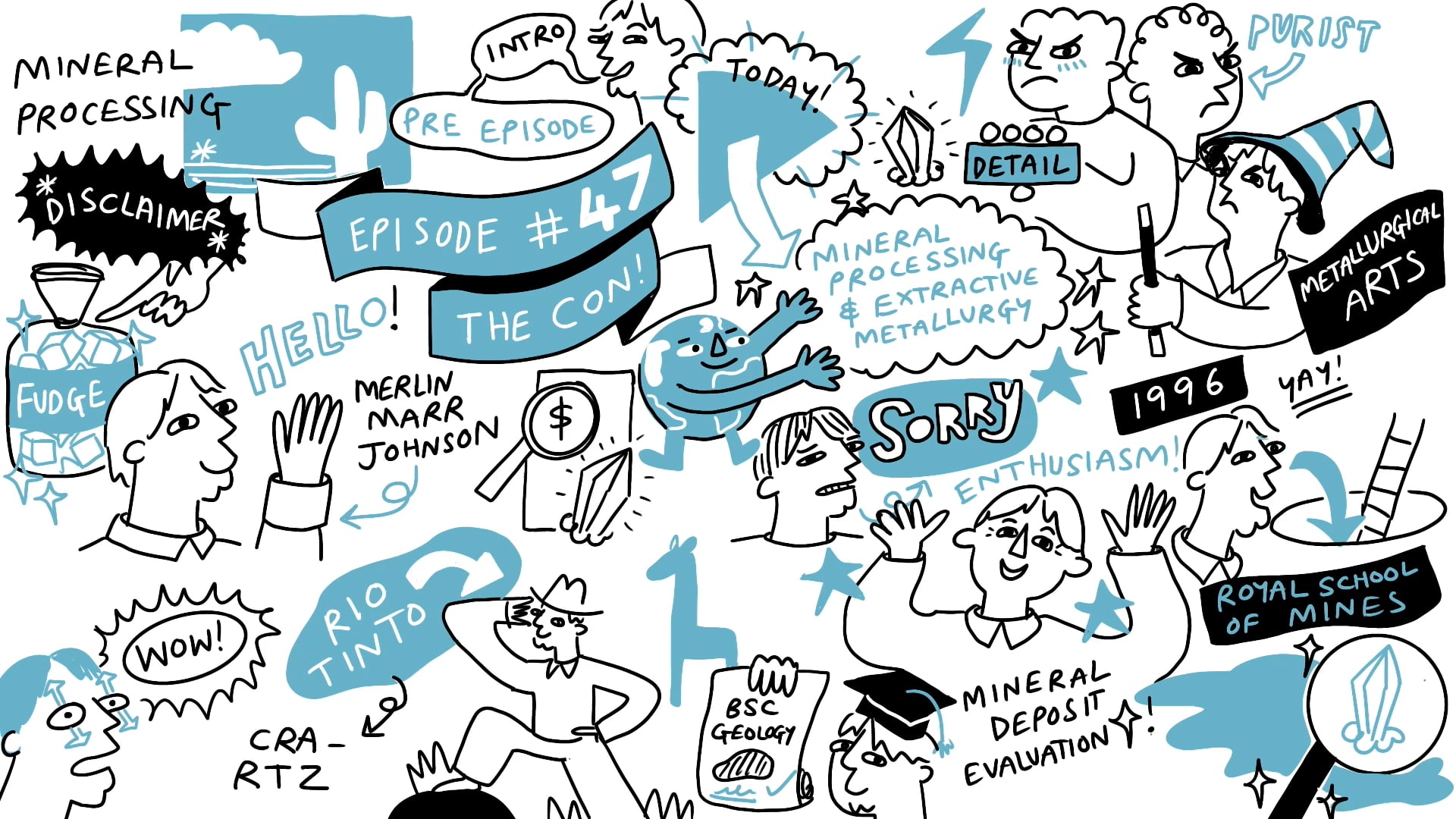Mining: Mine economics & underground mining methods
.jpg)
More episodes
Transcript
Mine economics
There's a whole host of other aspects such as slope stability, how steep the sides of your open pit can be, how wide the benches have to be, you know, the engineering of an open pit, it's a thing of beauty. Really, it is a remarkable piece of engineering, and planning and scheduling and organisation. But at its simplest, it's a balance between the cost of stripping it and accessing your ore and when it becomes more expensive to mine your ore than it is to sell your ore then you're making a loss. And you want to avoid that generally as good business practice, you want to be making money not making a loss. I worked on a project, for example, that had a sterile cap to it, the mineralization came up to within 75m of the surface and extended from minus 70m for another 200m down. And it was a very, very substantial tabular ore body that came up to within 70m of the surface. The CEO of the company that I was working with wanted to get into production quickly and for very low capital, he didn't want to spend a lot of money on developing the deposit. No matter which way you looked at it, you needed to spend some money upfront because the pre-strip, to clear away the 70m of crud off the top was going to cost $20M and it was going to take 18 months, you might have been able to push it down. But you know, this was in a remote location, you might have been able to pull in some extra vehicles and shovels. But still, it's going to take you over 12 months to do it. And then we'll have a big pit 70m deep already and then this tabular body going down from that level. The strip ratio on that to get down to 300m below the surface was prohibitive. The grades on this actually gradually got better and better as you went down. So the highest grade material was right at the bottom but the economics of this open pit were terrible. Because the further you went, the more you had to strip, the wider your pit got the more tonnes that got incorporated, the more tonnes of waste got incorporated as the deep he went. So, the open pit idea was unattractive because it didn't work economically. Then we had to look at going underground and we had to put the development down to 70m but actually that was just the top of the ore body. That what we established when we're talking to the engineers was actually this was the best thing to do was to go down 80m below the top of the ore body and then what work up in 4 levels can be extracting this from the base in 20m sections over 4 raises up to the top of the ore body, and then continue the development and go another 80m below that. And then another until these 4 development levels each 80m to get down to the bottom of the ore body.
Now to put that development in, it was going to take 18 months and it was going to cost $17M to develop the whole mine. And the CEO just didn't want to have to deal with that kind of complexity and that kind of capital upfront, even though the economics on developing that deposit were phenomenal. So, it was such a difficult conversation we kept going round around in circles. Eventually we managed to do it, it was that kind of a PEA level work, we did quite a detailed bit of engineering on both the open pit and on the underground variety of types of underground mining, with stressed and test. But effectively, we came out with a single mining method. And it was a slam dunk, it showed that this was much better than going with an open pit. What I'm effectively trying to say is that quite early in your evaluation process, you have to choose whether you want to go underground mining or open pit mining.
Underground mining methods
Now, I highly recommend that you spend a few minutes on YouTube looking at some schematic videos of how underground mining methods are done. And depending on the width of your ore body and geometry of it, you're going to use the different kind of underground mining methods. For example, if you've got a small scale steeply dipping ore body, you'll probably want to do something called cut and fill. It's essentially imagine, just kind of pulled your hand up at an angle in front of you, with your fingers pointing away from you is taking the bottom slice of your hands getting to a little finger out in one bite, and then filling that back up again with waste material, perhaps tailings and cover paste backfill, and then coming up the next finger and take that off, and then the next slice along the bottom and then suddenly work gradually upwards. And that is highly selective, very low productivity, very good recovery, it’s backfilled and each time you backfill the water level that you've just mined, it becomes the floor of the next drift that you're doing, you've got to drill and charge and blast it's extremely flexible, got very low dilution, and use the same equipment for mining development. But its small scale and is expensive and you really need to have extremely high grades to be able to cover the cost of that. Then from that narrow cut and fill model you're going to gradually go up in scale through I don't know something like room and pillar which is used for very shallow dip continuous horizontal or sub horizontal ore bodies.
Sublevel stoping ,which is more versatile is kind of larger scale mining on your tabular ore body. When you've got more scale you mine it from the bottom, but also from one end. And so you can be dropping it down using gravity, it works well on steeply dipping ore bodies, it works particularly well when there’s regular shape, and it preferably has good competency boundaries or clear boundaries between the waste rock and the ore. And you mine first on primary stopes, you backfill and you come back and do the secondary stopes later. It's quite high-rate productivity, you can develop a mine with lots of production points. Again, it's really worth just going through these mining methods on YouTube. Because the 3D animations that you can see on the videos will explain it much better than I can do over a podcast. You go up through sublevel caving, which is essentially a system where you're dealing with a larger ore body, you have to put in all of the development in place. First, your drilling deviation is absolutely crucial. You've got to make sure you put all your drill holes, no charge points in exactly the right point. It's very good for automation, it's very good for not having lots of people underground. When you start caving, you're beginning to deal with dilution, you're beginning to deal with substance on surface and you go from sub level caving all the way up to the daddy of them all, which is block caving. These are huge volumes. This is the lowest cost operating underground method you can have. But problems with it, you've got these enormously long development times, you've got extreme stress changes.










































.jpg)
.jpg)
.jpg)















